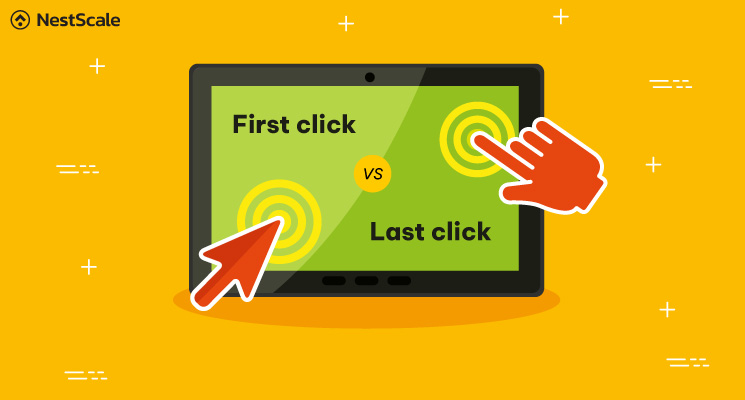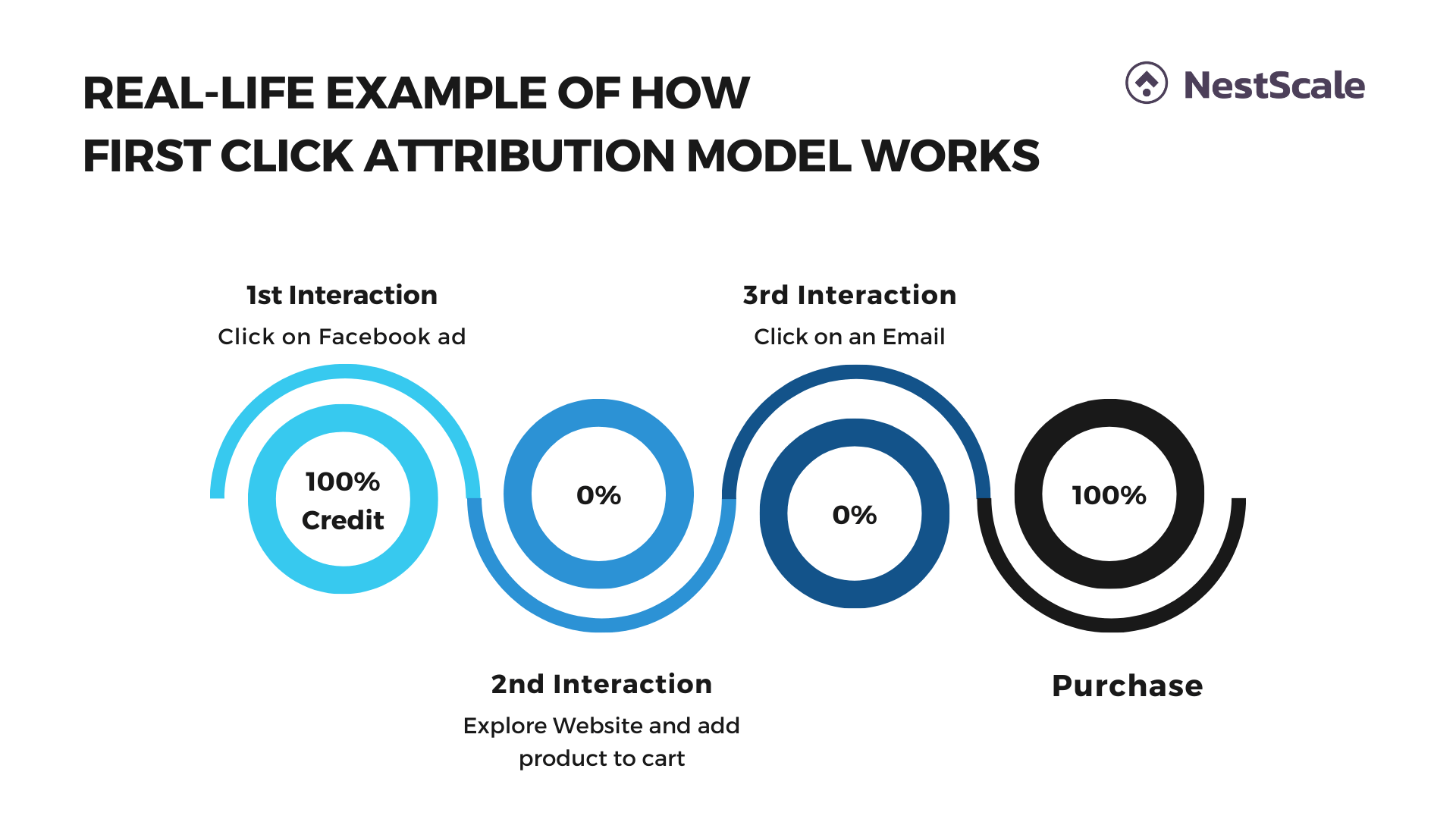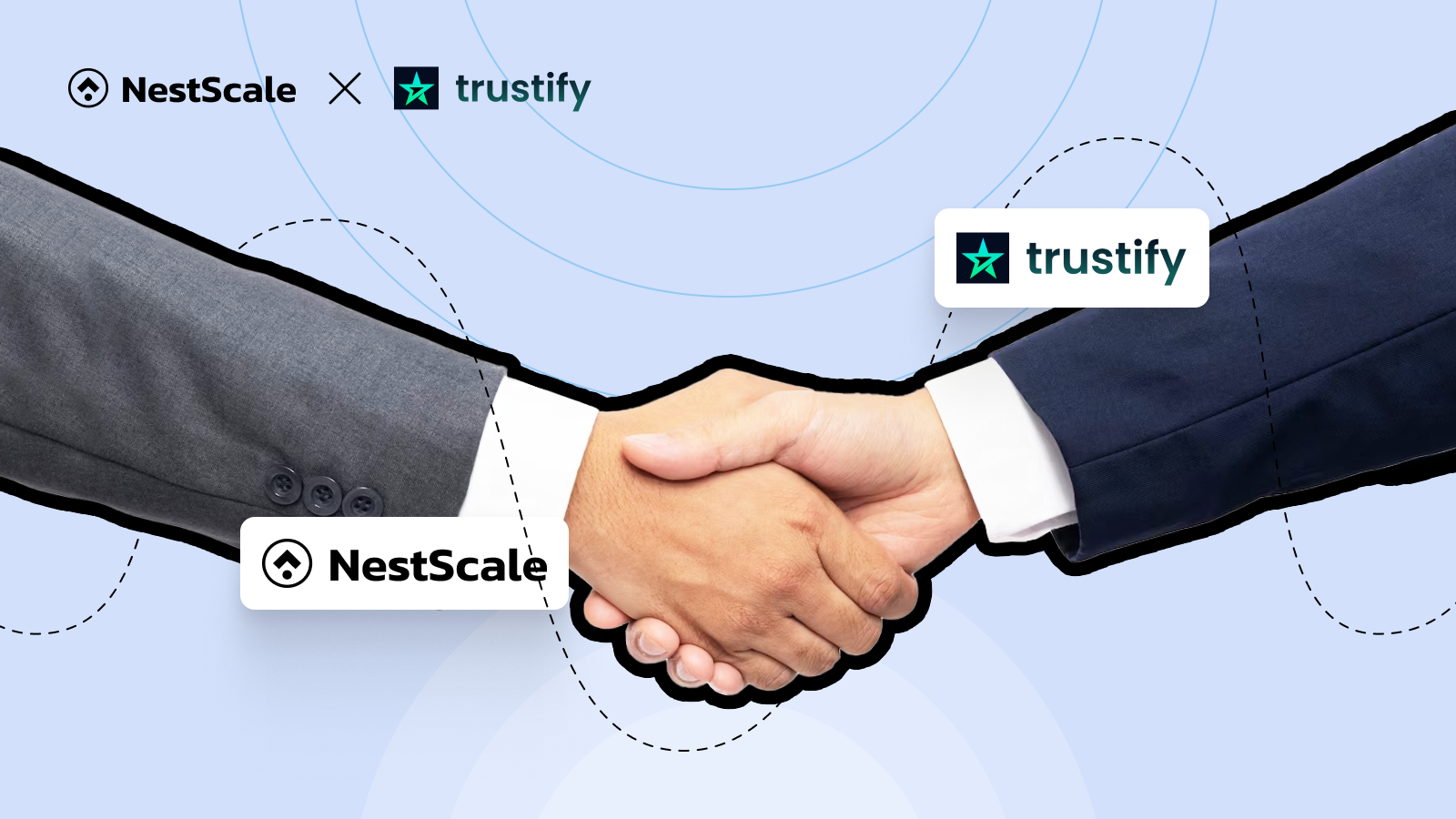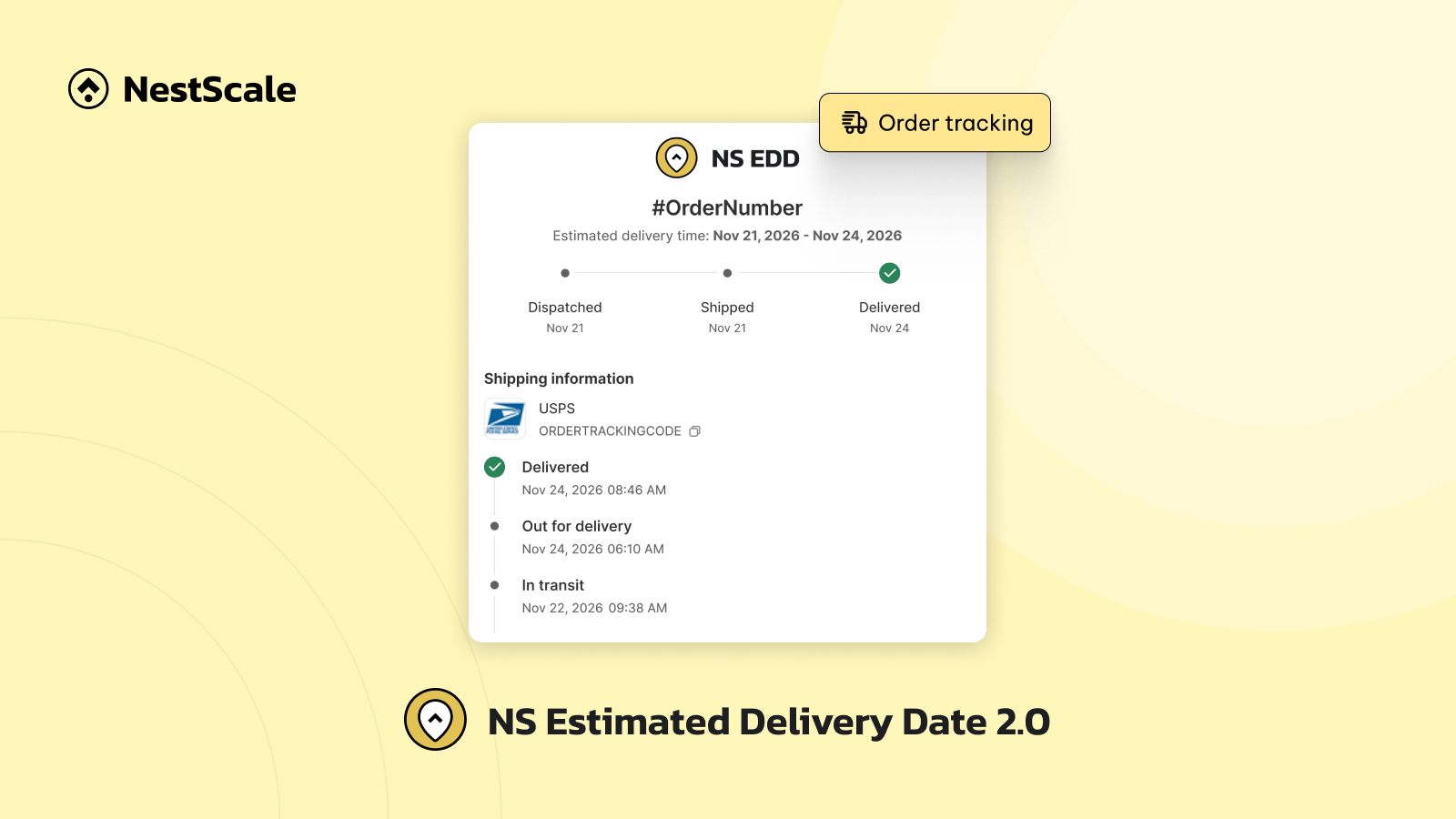If you’ve been pondering the merits of First Click vs. Last Click Attribution Models, you’ve come to the right place. This blog is your comprehensive guide to understanding these models and determining when to apply them.
We’ll begin by defining First Click and Last Click Attribution and then explore their respective advantages and disadvantages. By the end of this read, you’ll have a solid grasp of how each model functions and the scenarios in which they prove most effective. So, find a comfortable spot, and let’s dive into this exploration of attribution models to enhance your business strategies!
What is the First click attribution model?
The First click attribution model is like saying the first touch is the most important. It believes that when someone first hears about your brand or clicks on your stuff, that’s the key moment that gets them interested. So, when they eventually do something you want them to do, like buying or signing up, it gives all the credit to that initial interaction or we can say “First impressions matter the most.”
For example, imagine you run an online clothing store and trying to figure out where your customers are coming from and which marketing channels are most effective. Here’s what happens:
- First interaction: A potential customer is scrolling through a Facebook feed and clicks on your store’ Facebook ad.
- Second interaction: She explores your website for a bit, but she’s not quite ready to make a purchase so she decides to leave without buying anything.
- Third interaction: Later, she gets an email with a discount, clicks it, and purchases a $50 dress.
Now, using the First click attribution model:
The customer’s purchase of the $50 dress would give 100% of the credit to the first interaction, which was clicking on the Facebook ad. So, in terms of tracking conversions, Facebook gets all the credit for that $50 sale, even though the email played a part in convincing Sarah to make the purchase.
What is the Last click attribution model?
The Last Click Attribution Model works by giving all the credit to the very last interaction a user has with your brand just before they make a conversion, like buying something or signing up. It believes that this final touchpoint had the most influence on the user’s decision and got all the credit for tracking conversions.
For instance, let’s say you run an online shoe store, and you’re trying to figure out how your marketing efforts are driving sales.
- Facebook ad: A potential customer sees your Facebook ad showcasing the latest sneakers and clicks on it, but doesn’t make a purchase.
- Website visit: She explores your website for a while, and adds a pair of sneakers to her cart. However, she gets distracted and leaves without completing the purchase.
- Email newsletter: A few days later, she receives an email from your store with a special discount code and decides to buy the sneakers for $100.
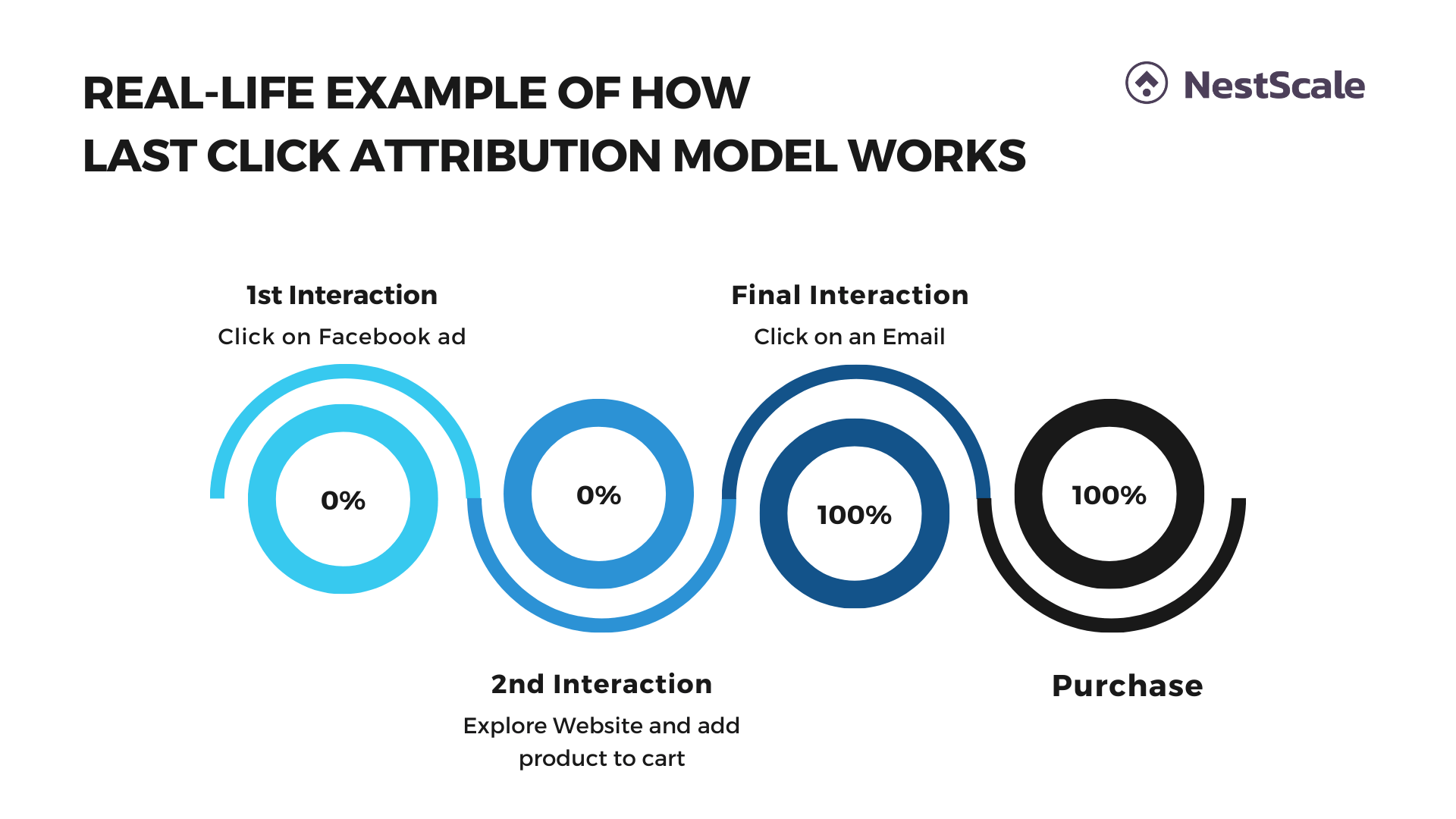
Now, in a Last Click attribution model, all the credit for that $100 sale would go to the email because it was the very last interaction before the purchase. It doesn’t consider that the Facebook ad initially caught her attention or that she explored your website and added the sneakers to her cart.
Key differences: First click vs Last click attribution model
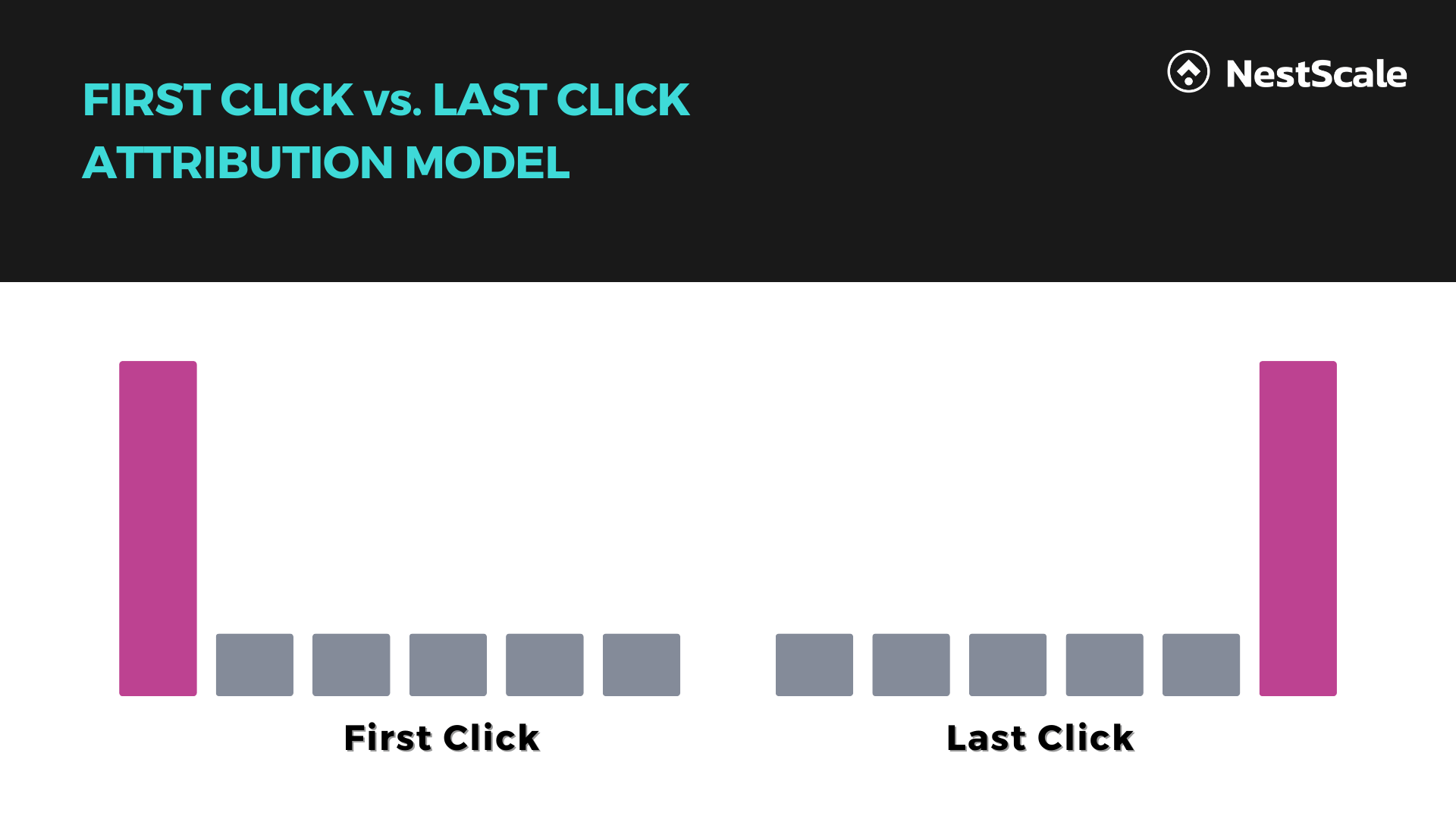
Let’s take a closer look at the strengths and limitations of both the First click vs Last click attribution models!
| Pros | Cons | |
|---|---|---|
| First click Attribution | – Easy to implement and understand, ideal for small businesses. – Highlights the channels that initiate customer interest, helping with top-of-funnel strategies. | – Overlooks the influence of subsequent touchpoints in the customer journey, possibly undervaluing their role |
| Last click Attribution | – Equally straightforward to implement and suits businesses of all sizes. – Provides immediate insight into the last interaction before conversion, crucial for quick conversions. | – Equally straightforward to implement and suits businesses of all sizes. – Provides immediate insight into the last interaction before conversion, which is crucial for quick conversions. |
Choosing between the First-click vs Last-click attribution model can significantly impact your marketing strategies and decision-making processes. They offer distinct perspectives with their own set of pros and cons which are presented above.
- First-click attribution: Invest more heavily in top-of-the-funnel marketing efforts, such as brand awareness campaigns and content marketing. You may prioritize channels that initiate customer interest, aiming to capture leads early in their journey.
- Last-click attribution: Focus on optimizing the final touchpoint in order to be particularly beneficial for e-commerce businesses, where the “add to cart” and “checkout” stages matter most. You can allocate your budget to channels that directly contribute to immediate conversions.
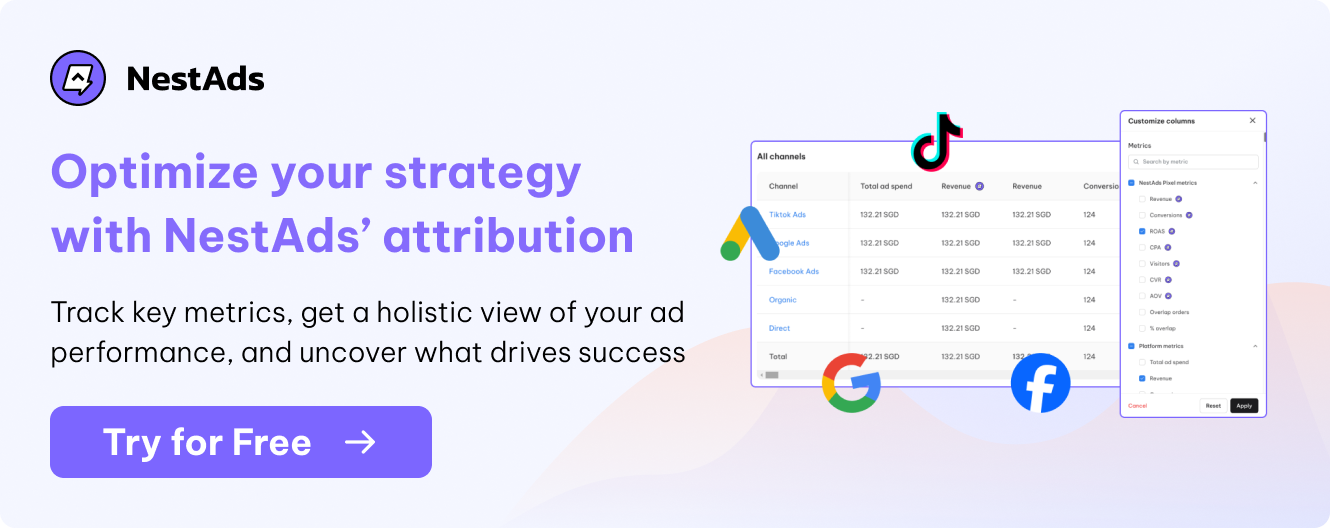
When to use the First click attribution model?
Think of First click attribution as your digital guide. It fits specific situations matching your business goals and customer journey. Let’s take a stroll through the scenarios when the First Click Attribution model should be your go-to:
Multi-channel marketing campaigns
First-click attribution is particularly valuable when you’re running multi-channel marketing campaigns. In such scenarios, a customer might interact with your brand through various touchpoints before converting. By attributing the conversion to the first touchpoint, you could gain insights into which marketing channel initiated the customer’s interest.
Long sales cycles
For businesses with long sales cycles, first-click attribution can provide essential insights. Consider industries like real estate or B2B software, where the decision-making process can span weeks or months. In such cases, the initial touchpoint often plays a significant role in shaping the customer’s journey.
Educational content
If your marketing strategy heavily relies on educational content, first-click attribution can be a game-changer. Educational content, such as blog posts, webinars, or whitepapers, aims to inform and guide the audience. The first interaction with this content can be a strong indicator of genuine interest.
Brand awareness campaigns
First-click attribution helps measure the effectiveness of your campaign in creating brand recognition. It attributes the conversion to the initial exposure, providing insights into the campaign’s impact.
When to use the Last click attribution model?
While Last Click Attribution may still have several limitations, and be not suitable for every business or marketing situation, there are specific scenarios where it shines. Let’s explore some of them!
E-commerce websites
For e-commerce businesses, where the goal is to drive immediate online sales, Last Click Attribution can be highly effective. It accurately attributes conversions to the last interaction, often a product page visit or a checkout button click, helping e-commerce businesses allocate their marketing budgets wisely.
Lead generation campaigns
In B2B industries or businesses focused on lead generation, Last click attribution can be a valuable tool. It identifies the final touchpoint that convinces a prospect to fill out a contact form or request more information, aiding in optimizing lead generation strategies.
Short sales cycles
For businesses with short sales cycles, where customers make quick purchasing decisions, Last Click Attribution can provide valuable insights. It highlights the last action that led to a conversion, making it easier to allocate resources effectively.
How to create an insightful report with the right attribution model?
Building a report with the right attribution model can greatly enhance your ability to understand customer behavior and optimize marketing efforts. Whether you’re using a first-click or last-click attribution model—or a more advanced multi-touch attribution approach—creating an insightful report requires careful planning and an understanding of how different touchpoints contribute to your overall conversions.
Here’s how to set up a solid attribution report:
Gather and centralize your data
First, identify where your customer interaction data is coming from. Are you running paid ads, email campaigns, organic social media efforts, or even influencer collaborations? You need to pull data from each channel to get a complete picture. Using tools that integrate cross-channel data is key. For example, you can use UTMs for tracking sources, event snippets for logging user actions, or APIs to pull data directly from platforms like Google, Facebook, or TikTok.
A good attribution tool will help centralize this data. If you’re using Shopify, third-party solutions like NestAds can automatically sync first-party data into a single dashboard for easy access, making it simpler to analyze the touchpoints in your customer journey.
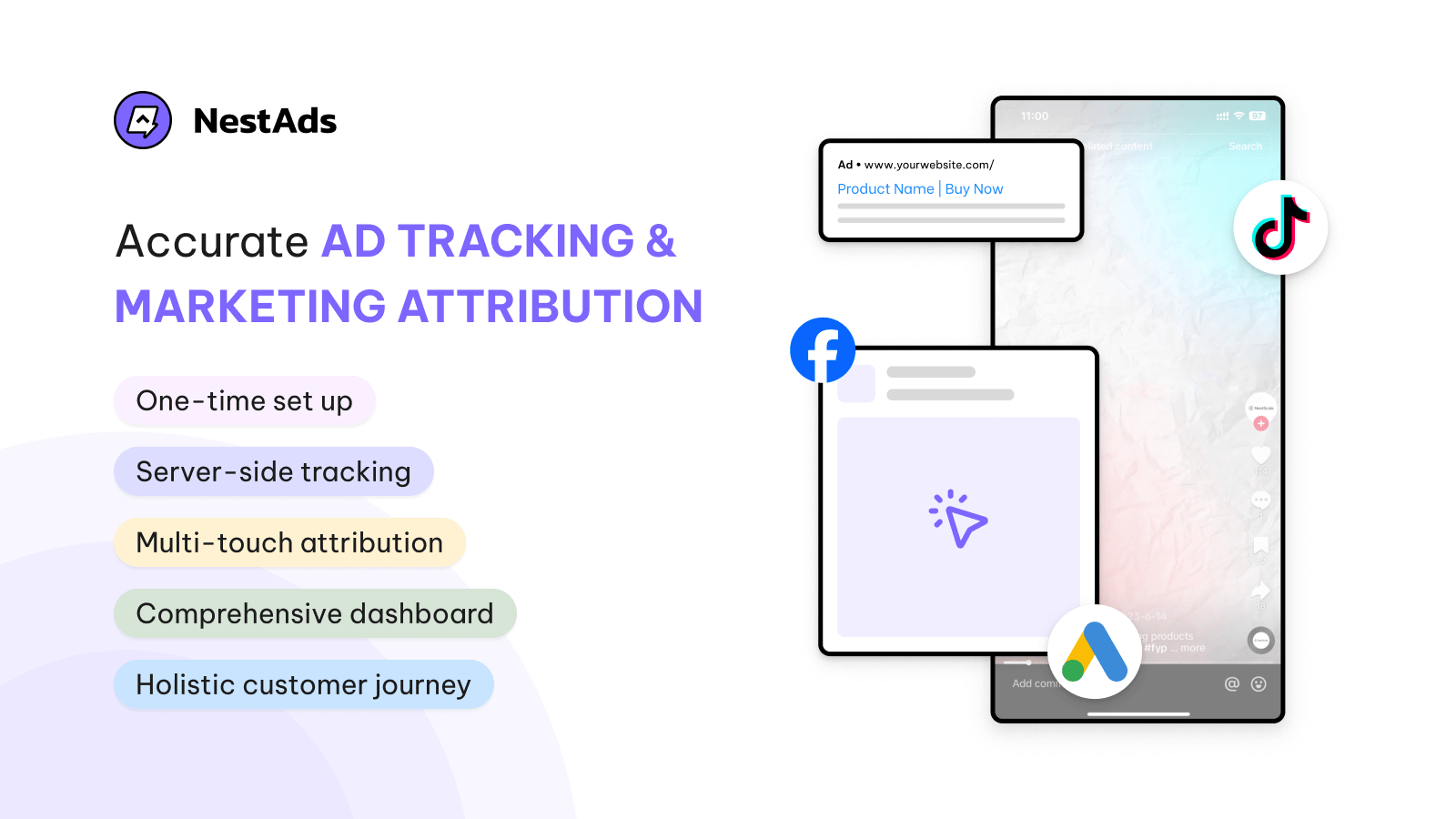
Choose the right attribution model
The next step is to select the attribution model that best fits your marketing goals. For example, if you’re focused on understanding the very first interaction that brings customers into your funnel, a first-click attribution model would be suitable. Alternatively, if you’re interested in the final action that drives conversions, a last-click attribution model is more appropriate.
You could also consider multi-touch attribution if you want a broader perspective. This approach allows you to assign credit to multiple touchpoints, providing a holistic view of how different interactions contribute to the conversion. Tools like NestAds make this easier by offering customizable attribution models, so you can choose what works best for your strategy.
3. Visualize the customer journey
An attribution report is most valuable when it’s clear and easy to understand. Begin by mapping out the customer journey. Where do your customers first hear about your business? What steps do they take before purchasing? This could include clicking on ads, reading emails, or browsing product pages. Visualizing this journey gives you a comprehensive view of how each touchpoint plays a role.
Use data visualization tools or your attribution platform’s reporting features to present the data in charts and graphs. Highlight key metrics like conversion rates, CPA, and ROAS for each channel, allowing you to quickly assess which touchpoints are performing well and which might need adjustment.
Discover your attribution groove!
So, there you have it! The battle between First Click and Last Click Attribution is fierce, but there’s no need to pick just one champion. In the ever-evolving world of digital marketing, your business is as unique as your thumbprint, and one-size-fits-all solutions rarely do the trick.
So, just try out many different attribution models and find the data-driven strategies that work best for your business. The more you explore, the better you’ll guide your audience toward success in the world of attribution!




































